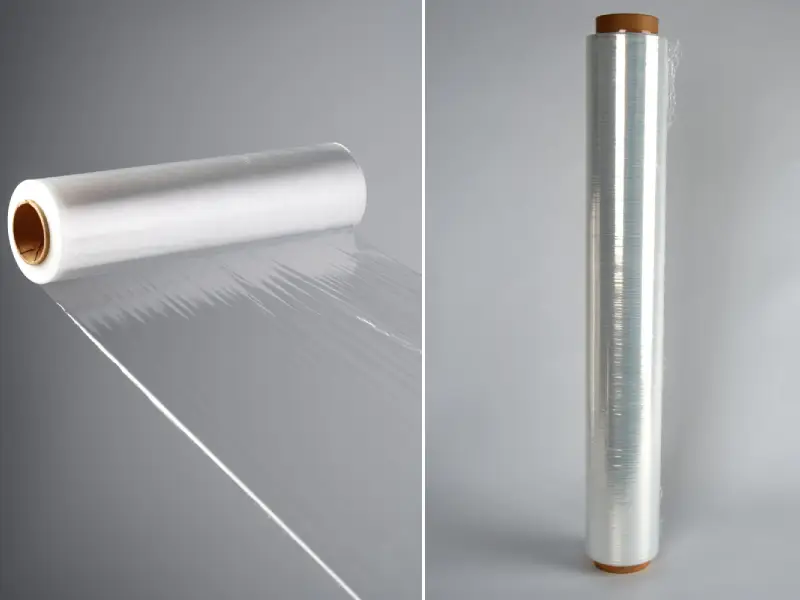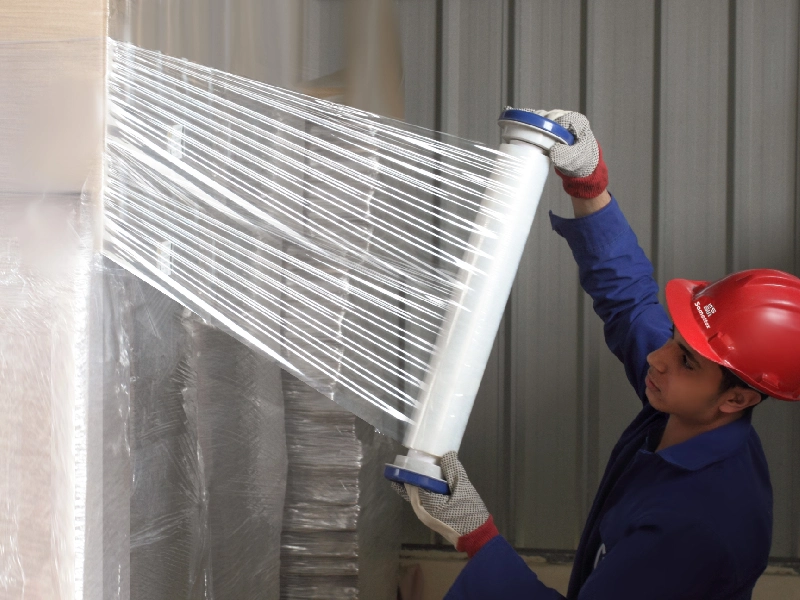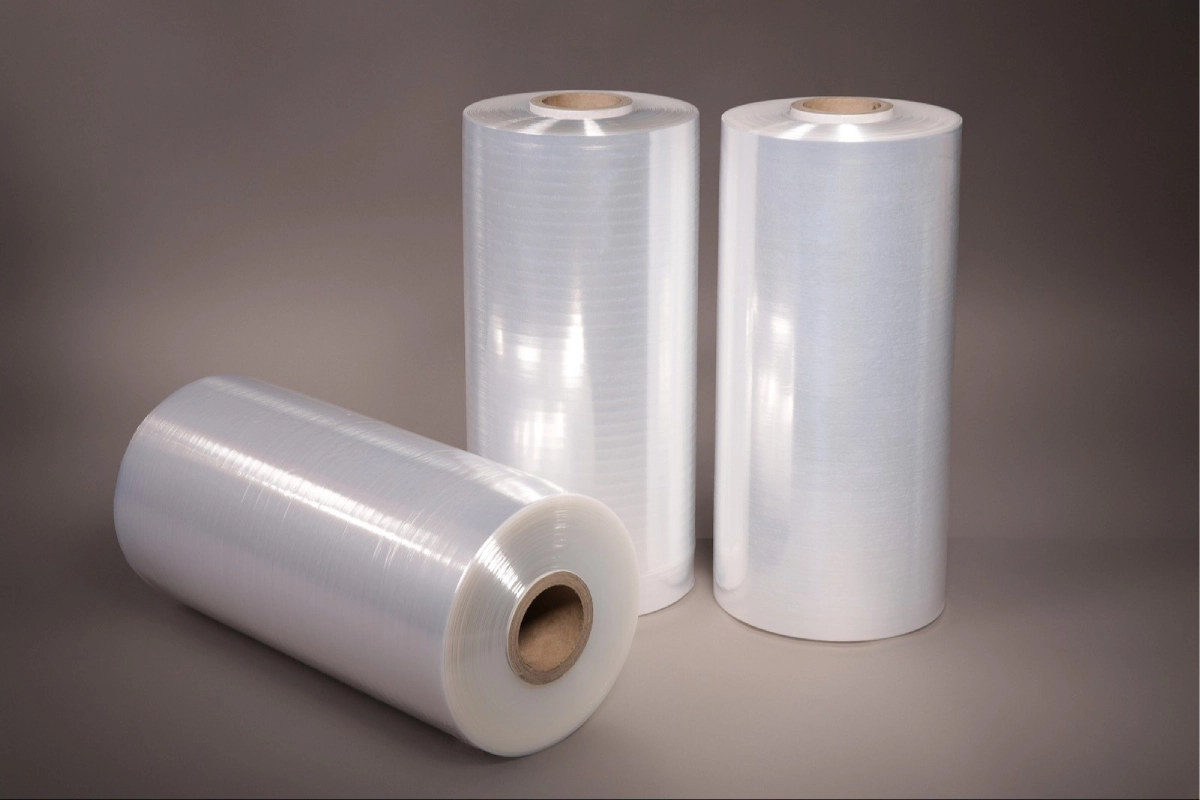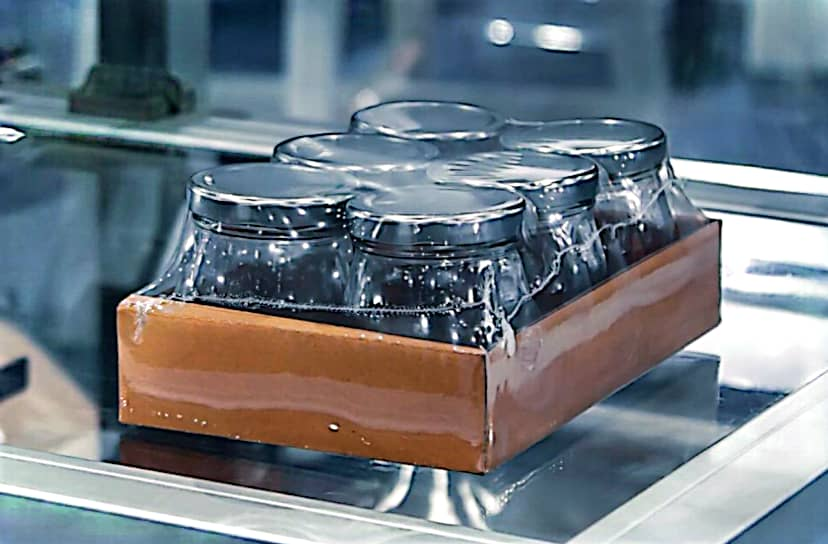Shrink film—also called shrink wrap or heat shrink plastic—is a type of polymer material that tightens around a product when exposed to heat. This creates a snug, protective layer that holds items together, keeps them clean, and improves shelf appeal. Because of this, shrink film is one of the most widely used and effective packaging materials across a variety of industries.
From wrapping food and beverages to bundling industrial parts, shrink film plays a crucial role in product protection, shelf-life extension, and visual presentation.
Shrink film is mainly made from polyethylene—particularly LDPE (low-density polyethylene) and LLDPE (linear low-density polyethylene)—but other materials like PVC and polyolefin are also used depending on specific needs. It comes in a wide range of thicknesses (15 to 400 microns) and widths, offering options for both single-layer and multi-layer shrink film solutions.
What Is Single-Layer Shrink Film?
Just like it sounds, single-layer shrink film is made from one continuous layer of polymer. It’s the most basic and cost-effective form of shrink packaging, widely used for wrapping lightweight or high-volume products.
Typically, it’s produced from polyethylene and manufactured in custom sizes to meet different industrial needs.
Key Benefits of Single-Layer Shrink Film
✅Affordable– Simple to produce, with lower material usage. Great for high-volume or budget-conscious applications.
✅High Clarity – Offers excellent transparency for clear product visibility—important for food, beverage, and retail packaging.
✅Flexible & Stretchable – Easily conforms to the shape of the product.
✅ Fast Packaging – Works well with automatic shrink wrap machines for high-speed operations.
✅ Lightweight – Reduces shipping and handling costs.
✅ Dust Protection – Seals tightly to keep out dust and debris.
Common Uses
Food & Beverage: Water bottles, soft drink cans, dairy, egg trays
Health & Beauty: Tissue boxes, personal care products
Print & Publishing: Books, magazines, paper bundles
Consumer Electronics: Small appliances, gadgets
Building Materials: Lightweight items like bricks or fiberglass
Agriculture: Certain farm products
What Is Multi-Layer Shrink Film?
Multi-layer shrink film is made by combining two or more polymer layers—each with its own specific function. These layers are laminated together during production to create a stronger, more versatile film.
Depending on the application, layers can be added to improve tear resistance, barrier protection, or printability. Some films contain up to five layers or more, offering advanced performance for demanding packaging needs.
Key Benefits of Multi-Layer Shrink Film
✅ Superior Strength – Enhanced resistance to tearing, punctures, and impact. Perfect for heavier or more fragile items.
✅ Barrier Protection – Protects against moisture, oxygen, UV light, and other environmental threats—great for food and pharma.
✅ Material Efficiency – Stronger performance allows for thinner film without compromising durability. More meters per roll = less downtime.
✅ Enhanced Clarity & Gloss – Optimized film structure often looks clearer and more polished.
✅ High-Quality Printing – Smoother surface allows for crisp, detailed branding.
✅ Storage Stability – Holds up better during shipping and warehousing.
Common Uses
Beverage Industry: Large bottle packs (e.g., water, soda, malt drinks)
Pharmaceuticals: Moisture-sensitive medication packaging
Home Appliances: Large electronics like fridges or washing machines
Chemicals: Leak-resistant packaging for sensitive compounds
Construction: Heavy items like bricks, tiles, and stoneware
Automotive: Protection of metal parts and components
Agriculture & Greenhouses: Wrapping plants, produce, or greenhouse coverage
Specialized Industrial & Military: Extra-large shrink covers (up to 18m wide, 1200 microns thick) for boats, equipment, and more

How Shrink Film Is Made
Shrink film—both single and multi-layer—is usually produced using blown film extrusion. In this process, polymer pellets are melted and extruded into a tubular film. Air is blown inside to expand the film to its final size, which is then cooled and wound into rolls.
Multi-layer films require several extruders working simultaneously to feed different polymers into a **multi-layer die**. This enables manufacturers to build shrink film with customized properties for each layer.
Bulk Shrink Film from Raga Parsian
At Raga Parsian, we manufacture and supply a full range of shrink films—both single-layer and multi-layer—for wholesale orders. With years of expertise in the polymer packaging industry, we’re proud to be a trusted name in high-performance shrink film solutions.
We offer custom options in various thicknesses, widths, and formats, tailored to your industry needs. Whether you’re packing light retail goods or heavy-duty industrial products, we’ve got a reliable shrink solution for you.

Why Choose Raga Parsian?
🔹 Guaranteed Quality – Produced using top-grade raw materials and advanced manufacturing technology.
🔹 Competitive Pricing – Direct from the source, no middlemen. Great value for wholesale buyers.
🔹 Product Variety – Single and multi-layer options, custom sizes, and even branded print films.
🔹 Expert Support – Our team provides free consultation to help you find the right shrink film for your application.
🔹 Fast Delivery – We’re committed to timely shipping so your operations run smoothly.
Need help or a quote? Contact the Raga Parsian sales team today for expert advice and pricing.

Final Take: Which Shrink Film Is Right for You?
Choosing between single-layer and multi-layer shrink film depends on:
🔸Product type – Size, weight, fragility, and environmental sensitivity
🔸Packaging goals – Basic dust cover vs. full protection from moisture and impact
🔸 Budget – Single-layer is cheaper up front; multi-layer may offer better long-term value
🔸 Machine compatibility – Some equipment may work better with one type over the other
Single-layer shrink film is perfect for lightweight or low-risk items, offering great value and speed.
Multi-layer shrink film is ideal for heavier, high-value, or sensitive products—where protection and performance can’t be compromised.
And as packaging technology continues to evolve, expect even smarter shrink films to hit the market—bringing more efficiency, clarity, and strength to your packaging process.



